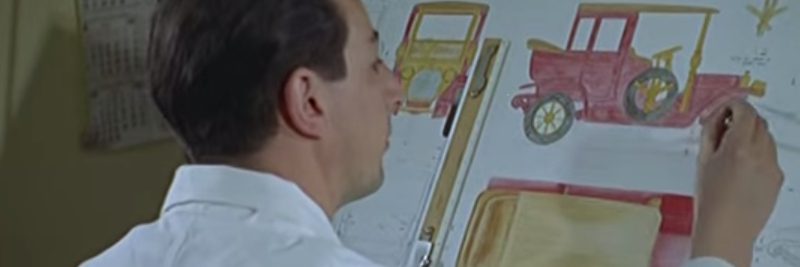Created in 1952 and introduced to the market by Lesney Products a year later, Matchbox toy cars were originally a die-cast car that were sold in boxes that were very similar to boxes that sold matches during the early days of the product. The focus of this line of toys was to create smaller cars that were sturdy and durable, as characterized by the early models that were made of metal and didn’t have any interiors or windows.
Invented by Jack Odell, the story behind the invention of Matchbox Cars is quite unique. Odell’s daughter liked to take spiders to school in matchboxes, so one day he made her a tiny steamroller that she could take to school instead. Made of brass and painted red and green, the steamroller was loved by his daughter’s friends and so Odell hurried to create more of them. They didn’t cost a lot to make, contained no batteries, and were big enough that they couldn’t be swallowed.
In Just One Year, Odell Was Setting Up a Production Line
The first Matchbox cars were made in an old London pub and the first cars to come off the line were copies of the steamroller he’d made for his daughter. The next car was a Land Rover, then a double-decker bus, a fire engine, and even a bulldozer. By 1954, there were 19 different vehicles in the line of Matchbox cars and they typically sold for about 49 cents.
Matchbox cars might have started out as a basic die-cast type of vehicle, but it didn’t take long for Odell to see the value in creating fine details for the kids. Some of his vehicle designs ended up having over 100 different parts that were die-cast, including ceiling hooks and windshield wipers. By 1962, Matchbox cars were being made at a pace of 1 million per week.
That’s not too bad at all for a fellow that was born in 1920 to a poor family in North London and was expelled from school at the age of 13.
Odell Wanted To Be Remembered As a Good Engineer
There’s a story about Jack Odell from the early days, just a couple years after production ramped up on Matchbox cars, about how he approached a young engineer about the design of a seat. It was going into the interior of a Model T and Odell told the young man that there wasn’t enough padding on the seat to make it look realistic.
Odell also made sure to visit all of the automakers around the world so he could always copy their new designs. It was free publicity for the automakers, so they always let Odell in to see the official designs to create authentic reproductions. One of his first big sellers, in fact, was a model of the coronation coach for Queen Elizabeth II.
Odell may have wanted to prevent his daughter from taking more spiders to school, but his one invention resulted in the creation of over 3 billion cars and counting. Although Mattel owns the Matchbox brand today, the dedication to details and authenticity remains and that is a tribute to the legacy of Jack Odell.
Strong proponent of individual liberty and free speech. My goal is to present information that expands our awareness of crucial issues and exposes the manufactured illusion of freedom that we are sold in America. Question everything because nothing is what it seems.




















